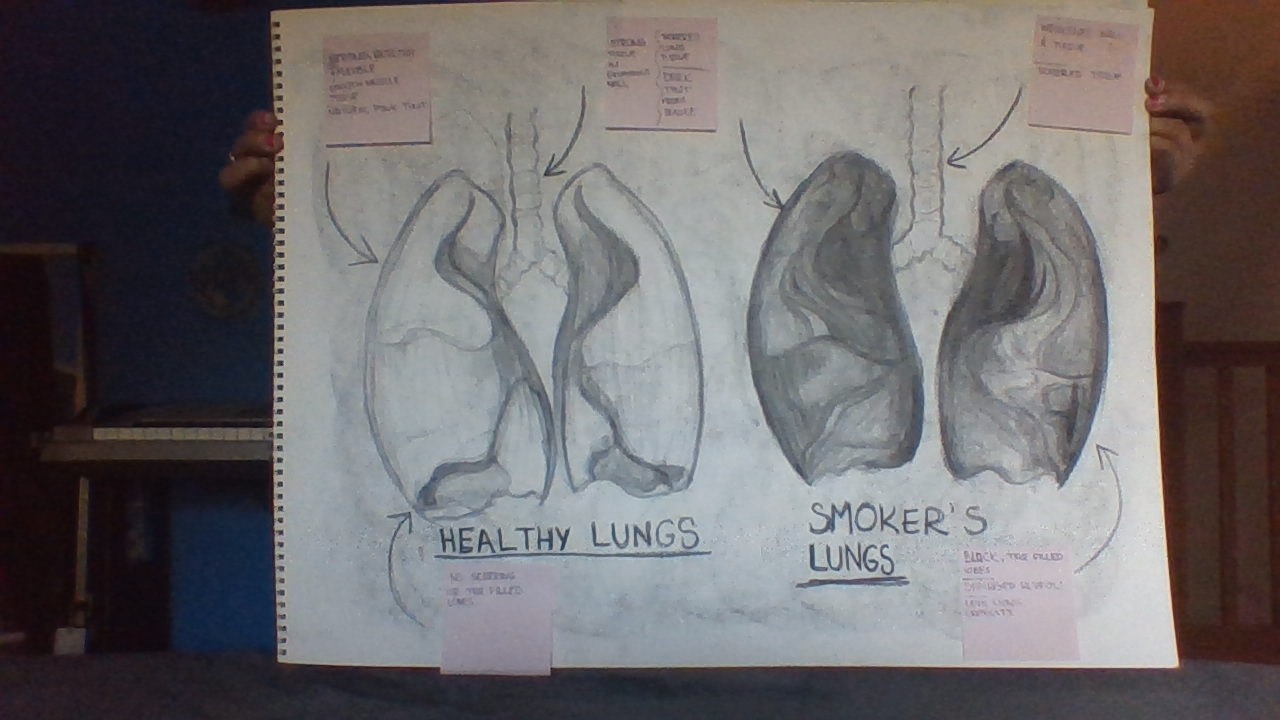This is a drawing I’ve done with charcoal of healthy lungs and smoker’s lungs. It is showing the long term affects that smoking has on the lungs. I’ve labeled which lungs are which and the sticky note labels state the visible differences between the two.
A&P Final <— I don’t know if this hyperlink will work on here but if you can’t see it then send me a message on slack! (:

The difference between a healthy lung and a damaged lung is made very clear in this artistic depiction. The muscles of the healthy lung obviously are more robust In comparison to the tainted discoloration of the lungs effected by the cigarette smoke, and the lobes and esophagus are both drawn to show the damage done to them as well. Although the picture doesn’t show it, it was stated in Sheryl’s essay that smoking can alter the growth of a young person’s lung depending on when they start the habit. In the drawing, she labeled the differences between the lungs, and their functioning abilities depending on their condition.
The use of the charcoal pencil was a creative way to depict this health condition as a smoker’s lung often takes on an ashy, burned appearance when damaged. In the submitted photo, the drawing also appears to be fairly large or to scale, which helps to capture the wide range of harm done in the diaphragm. In addition to the lungs, the blood is also infected by the smoke, as well as the heart. In her essay, Sheryl explained how smoking increases heart rate, and when one tries to break the habit, the sudden “change in blood pressure” and drop of heart rate “will raise the chance of having a heart attack”. As well as triggering heart conditions, smoking also increases one’s ability to get cancer. The smell and taste receptors also experience damage when exposed to cigarette smoke. I like how this drawing has clearly compared the two states of a lung and the effect that the shading had on the one to the right. The symmetry of the organs makes this piece eye – catching and really demonstrates the effect of smoke on the delicate structure of the tissues. In terms of presentation, she did a nice job of replicating the structure of the lungs and no doubt the picture has an even greater effect when one sees it up close and in-person. From what I’ve read and can see in the project, she covered Course Objective #46, as she analyzed the effects of “smoker’s lung” and how it inhibits the respiratory system from functioning effectively.